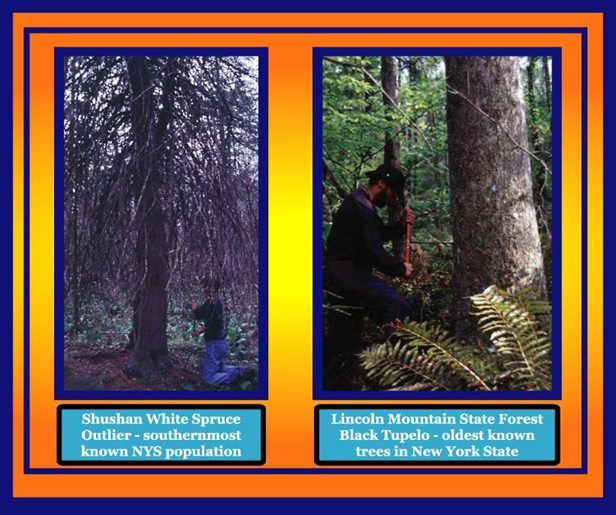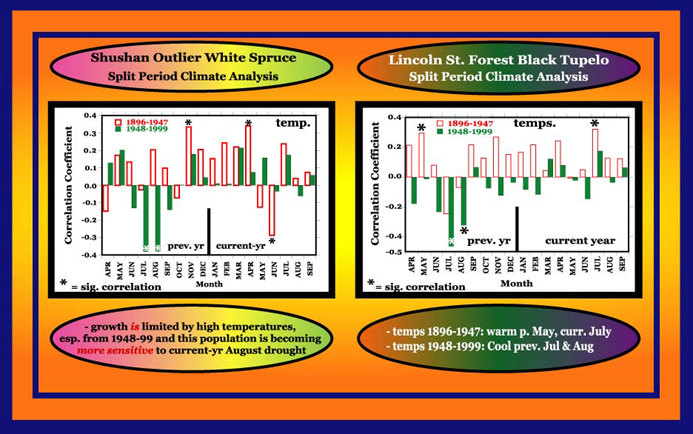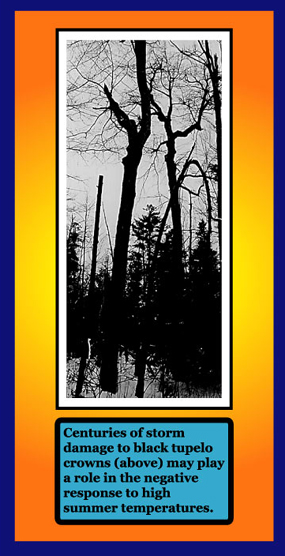
Temperate & Boreal Tree Species in the Hudson Valley
Neil Pederson (grad student) under the guidance of
Gordon Jacoby, |
|
A recent vegetation modeling study predicted significant changes in eastern US
forests including tree species migration of 100 to 250 km under greenhouse
gas warming scenarios over in only 100 years.
However, the type of tree growth factors used & lack of long-term climate-tree growth information limits the realistic modelling for future climate change scenarios. Tree-ring analysis has long been used to directly determine a tree species' monthly or seasonal climate response. It can also reveal how a species' relationship to climate changes as the result of a changing climate. By using the biodiversity of the Hudson Valley, tree-ring analysis can determine a robust, long-term estimate of climate/growth relationship for many important eastern US tree species. A fuller description (with site descriptions, pubs, presentation & [eventually data] can be found here. |

|
The first step in this new study was to compare the climate response of two contrasting
tree species, white spruce and black tupelo.
White spruce is the dominant tree species at the North American hemispheric northern treeline in Canada while black tupelo is more common throughout the SE US. |

|
Results show that in the last 50 years, white spruce @ its southern range limit is becoming more sensitive to warm summer temperatures and August drought despite growing in a swamp. This result supports climate model predictions of future tree migration. The negative temperature response of black tupelo over the last 50 years was unexpected. Factors that could contribute to this unusual result are age, canopy structure, an inherently high respiration rate for black tupelo or the influence of pollution. |

|
A network including a minimum of 30 tree species will be developed to provide a characterization of the species-climate relationship in the Hudson Valley. Thus, this study will have direct application to how climate change may effect biodiversity and ecosystem processes under future global change scenarios. The potential movement of the biome ecotone in the Hudson Valley region will be more easily anticipated as a result of this study. Comprehending climate change impacts on forest ecology will be important for regional economics. Such knowledge will also aid development of ecosystem management plans for public and private landowners. |
last updated 10/01